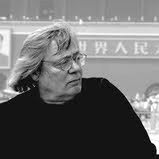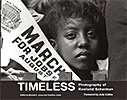Rowland Scherman, first Peace Corps photographer, on PBS this Monday, 6/24
 Rowland Scherman was the first or second photographer for the Peace Corps in 1961. His photographs appeared in Life, Look, Time, National Geographic, Paris Match and Playboy, among many others. He photographed many of the iconic musical, cultural, and political events of the 1960s, including the 1963 Newport Folk Festival, the Beatles first US concert, and Woodstock. He won a Grammy Award in 1968 for his photograph cover of Bob Dylan’s Greatest Hits. His published collections include “Love Letters”, an alphabet formed by posed dancers, and “Elvis is Everywhere.” He lived lives today on Cape Cod. [6] Rowland Scherman describes his day as the official photographer for USIA at the March on Washington, 1963. In his book, Timeless–photography of Rowland Scherman, Scherman shows and comments on some of his most famous pictures.
Rowland Scherman was the first or second photographer for the Peace Corps in 1961. His photographs appeared in Life, Look, Time, National Geographic, Paris Match and Playboy, among many others. He photographed many of the iconic musical, cultural, and political events of the 1960s, including the 1963 Newport Folk Festival, the Beatles first US concert, and Woodstock. He won a Grammy Award in 1968 for his photograph cover of Bob Dylan’s Greatest Hits. His published collections include “Love Letters”, an alphabet formed by posed dancers, and “Elvis is Everywhere.” He lived lives today on Cape Cod. [6] Rowland Scherman describes his day as the official photographer for USIA at the March on Washington, 1963. In his book, Timeless–photography of Rowland Scherman, Scherman shows and comments on some of his most famous pictures.
A documentary movie was made about Rowland Scherman by Chris Szwedo, called Eye on the Sixties; it has been shown on public television and at the Smithsonian.
The film is today at 1 pm on many PBS stations. It is on PBS in Maryland on Channel 474 (thanks for the ‘heads up’ from Pat Kennedy (PC/HQ 1961-65). This documentary movie about Rowland has been shown by many PBS stations over the last few years.
Rowland Scherman
Rowland Scherman was just beginning his career–after working first for the Peace Corps as a photojournalist– when the U.S. Information Agency (USIA) handed him an assignment in August of 1963: A civil rights march, they said. In Washington.
Scherman didn’t realize that he’d been assigned to cover one of the most monumental events in U.S. history. But there was a catch: the photos wouldn’t belong to him, they would belong to USIA, whose purpose was to use media to help improve the United States’ image abroad.
Nevertheless, he did his duty faithfully at the March on Washington on that hot August day, capturing the sandwich-makers and the children who arrived with their parents on school buses, as well as the celebrities who spoke from the podium. He shot from the top of the Lincoln Memorial and from down near the Reflecting Pool.
One image in particular—of a somber young black girl holding a flag that reads “I was there”—became one of the most famous and iconic images from that day.
He handed in his film and went on with his life. But occasionally he’d see an image reproduced somewhere—in a movie, on a poster—and think, “That’s one of mine.”
Now housed at the National Archives, Scherman’s collection remains one of the most enduring chronicles of the March on Washington.

Definitely the first photog of the PC. Paul Conklin came in a couple of years after I got there.
Rowland, I watched the PBS Documentary on you last night. a very well done program about a very artist and captivating man. Thanks for showing the world major events through your eyes. You would be one of those individuals that I would put on my top 5 to meet.
Thank you
Debbie
Nice. Says Rowland. Photomota@comcast.net
What a life…to have lived history, chronicled history, and made history. The personalities of the subjects come to life in the photographs, lasting treasures of those special moments. Thank you, Rowland.